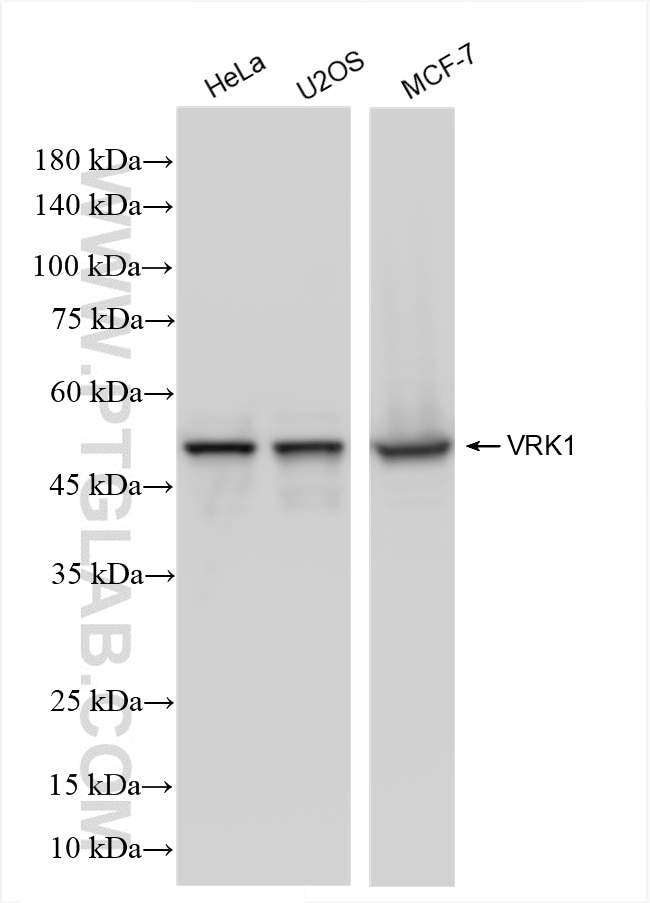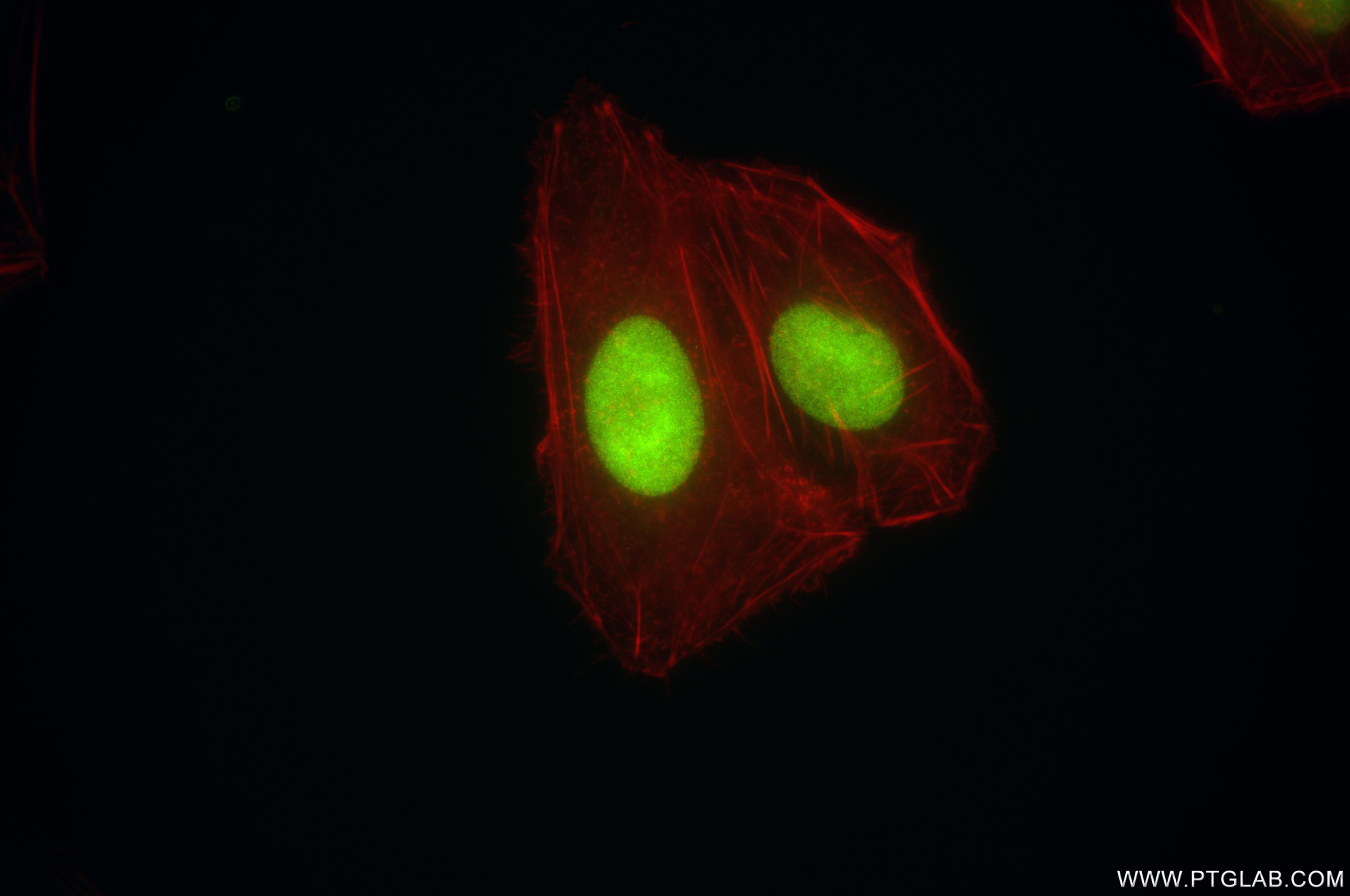Validation Data Gallery
Tested Applications
| Positive WB detected in | HeLa cells, U2OS cells, MCF-7 cells |
| Positive IF/ICC detected in | U2OS cells |
Recommended dilution
| Application | Dilution |
|---|---|
| Western Blot (WB) | WB : 1:5000-1:50000 |
| Immunofluorescence (IF)/ICC | IF/ICC : 1:500-1:2000 |
| It is recommended that this reagent should be titrated in each testing system to obtain optimal results. | |
| Sample-dependent, Check data in validation data gallery. | |
Product Information
85598-2-RR targets VRK1 in WB, IF/ICC, ELISA applications and shows reactivity with human samples.
| Tested Reactivity | human |
| Host / Isotype | Rabbit / IgG |
| Class | Recombinant |
| Type | Antibody |
| Immunogen | VRK1 fusion protein Ag27754 相同性解析による交差性が予測される生物種 |
| Full Name | vaccinia related kinase 1 |
| Calculated molecular weight | 396 aa, 45 kDa |
| Observed molecular weight | 45-50 kDa |
| GenBank accession number | BC103761 |
| Gene Symbol | VRK1 |
| Gene ID (NCBI) | 7443 |
| Conjugate | Unconjugated |
| Form | Liquid |
| Purification Method | Protein A purification |
| UNIPROT ID | Q99986 |
| Storage Buffer | PBS with 0.02% sodium azide and 50% glycerol , pH 7.3 |
| Storage Conditions | Store at -20°C. Stable for one year after shipment. Aliquoting is unnecessary for -20oC storage. |
Background Information
Vaccinia-related kinase 1 (VRK1) is a members of the vaccinia-related kinase (VRK) family of serine/threonine kinases and are principally localized in the nucleus. VRK1 was initially described as a kinase with homology to B1R, a vaccinia virus kinase required for viral DNA replication and the early phase of infection. It has been suggested that VRK1 was overexpressed in numerous human tumors, such as lung carcinomas, hepatocellular carcinoma, breast carcinomas, head and neck squamous cell carcinoma. (PMID: 28927264, PMID: 29103766)
Protocols
| Product Specific Protocols | |
|---|---|
| WB protocol for VRK1 antibody 85598-2-RR | Download protocol |
| IF protocol for VRK1 antibody 85598-2-RR | Download protocol |
| Standard Protocols | |
|---|---|
| Click here to view our Standard Protocols |

